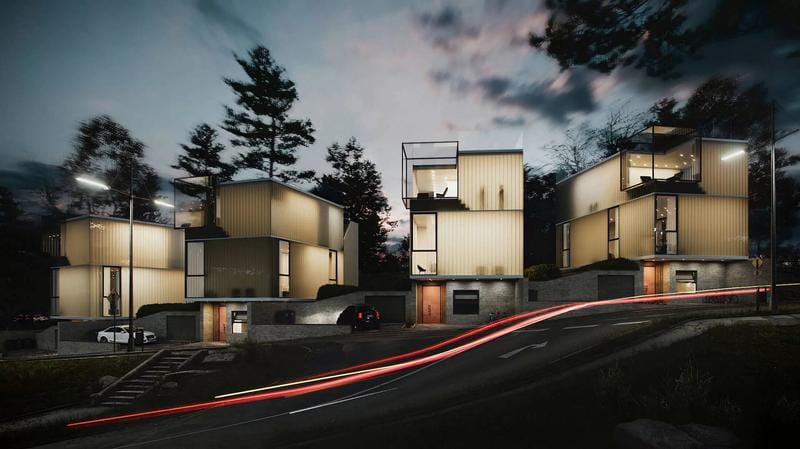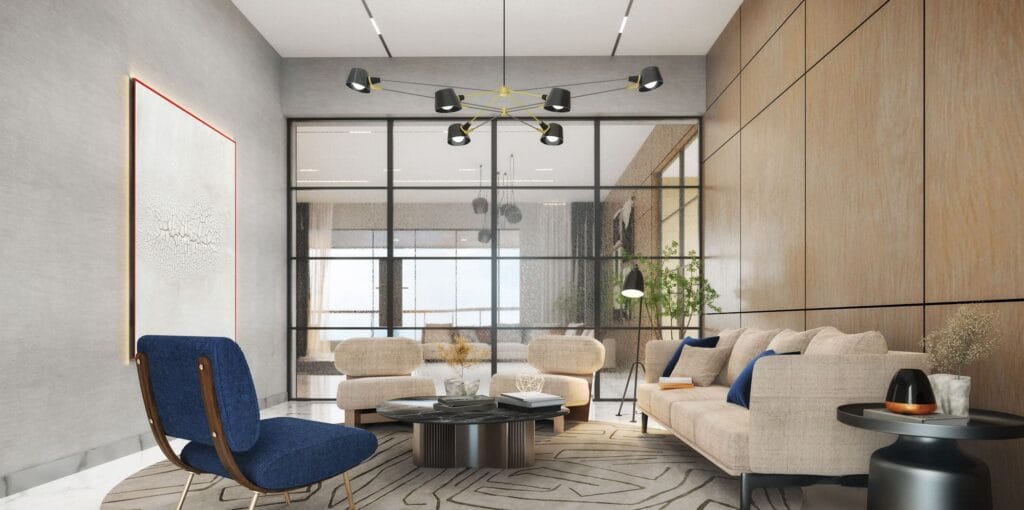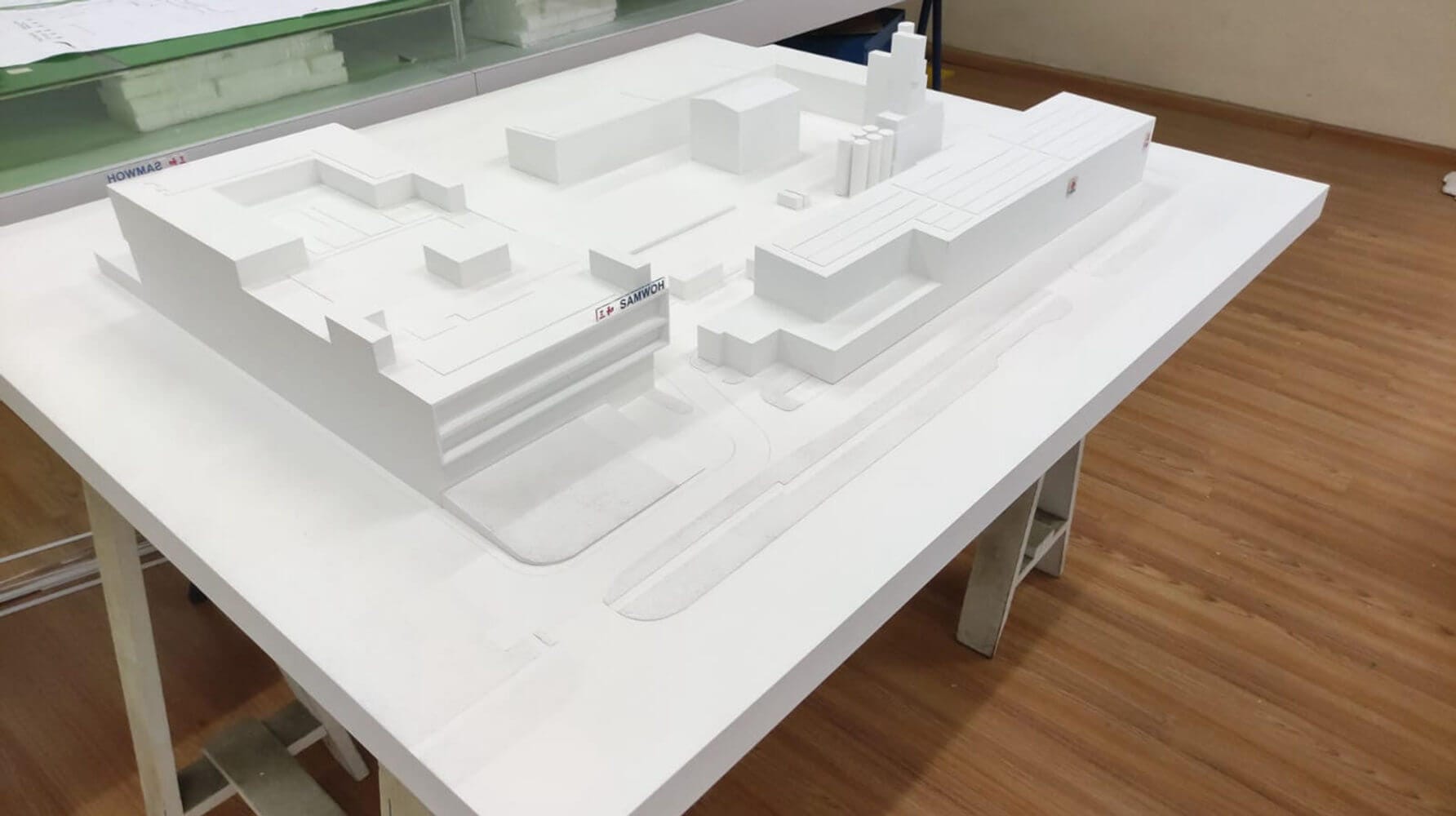مرحباً! تساءل يومًا كيف يتم وضع مخططات المهندسين المعماريين والمصممين? That’s the magic of 3د- التجسيد المعماري. It’s like getting a sneak peek into the future. This guide breaks down everything you need to know about this amazing technology, from its basic workings to its impact on the world of design and real estate.
جدول المحتويات
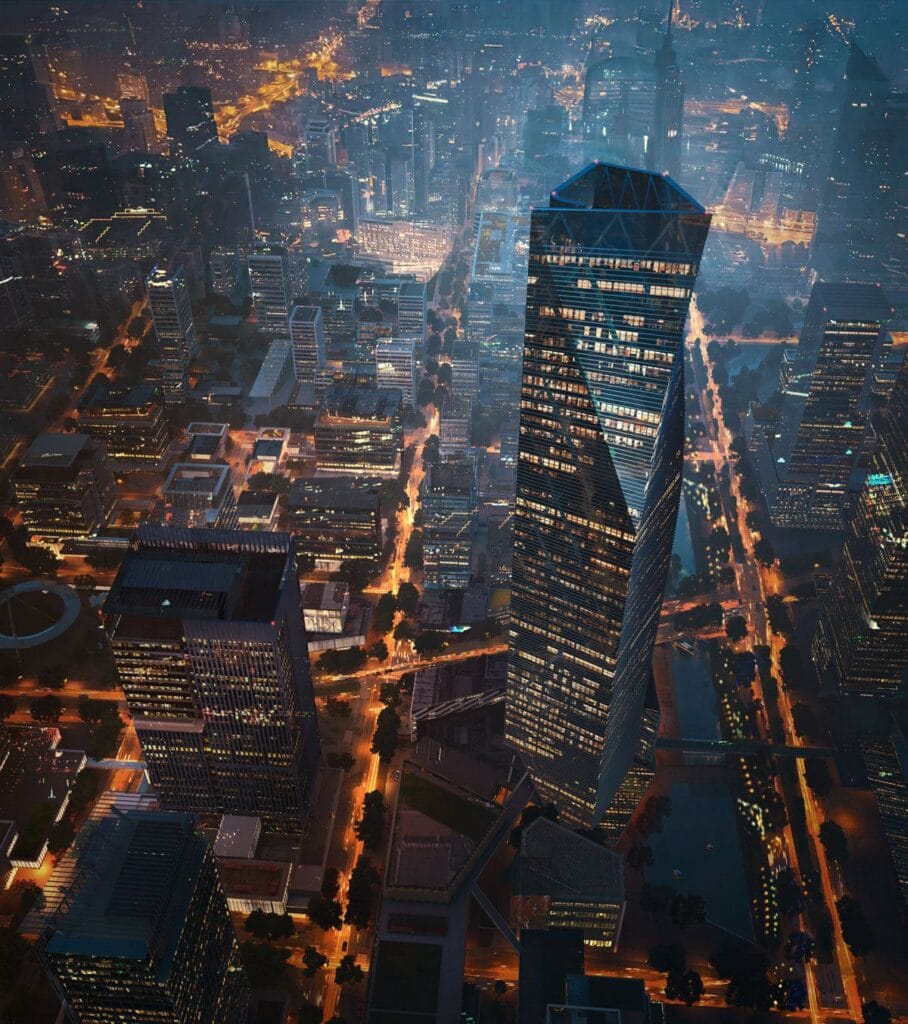
Understanding the Basics of 3D Architectural Rendering
ما هو العرض المعماري ثلاثي الأبعاد?
ببساطة, 3D architectural rendering is the art of creating lifelike images or animations that show off a building or space before it’s built. Imagine being able to walk through your new home before the foundation is even poured! It’s not just drawing; it’s crafting a digital preview using specialized computer software. These aren’t your average blueprints. We’re talking about detailed, photorealistic visuals that can make you feel like you’re right there. You might also hear folks call it architectural visualization, com.archviz, or even CGI in architecture.How Does 3D Architectural Rendering Work?
قد تفكر, “This sounds complex.” But let’s break it down step-by-step. It all starts with a digital blueprint, then some computer magic happens, and boom! You’ve got yourself a stunning visual.- النمذجة: أولاً, a 3D digital model of the building or space is created. Think of it as building with virtual LEGOs.
- النسيج: التالي, we add colors, أنماط, and materials to the surfaces. This is where a concrete wall starts to look like, حسنًا, أسمنت!
- إضاءة: Just like a movie set, we need to set the stage with light. This includes sunlight, indoor lights, and all the shadows they cast.
- إعداد الكاميرا: We pick the best angles to show off the design, just like a photographer.
- تقديم: هذا هو المكان الذي يقوم فيه الكمبيوتر بالرفع الثقيل, turning all that data into a beautiful image or video.
- مرحلة ما بعد المعالجة: أخيراً, a bit of polishing in editing software to add those finishing touches that make the image pop.

A Brief History of Architectural Visualization
From Cave Paintings to Computer Graphics
صدق أو لا تصدق, our ancestors were the original architectural visualizers. From simple sketches on cave walls to detailed models built by the Romans and Greeks, humans have always sought to visualize their creations.- Early Days: Think cave paintings and ancient models made of clay or wood.
- Renaissance Era: The introduction of perspective drawing changed the game, making visuals more realistic.
- 20th Century: Computers entered the scene. The 1970s saw the birth of Sketchpad, the first true computer-aided design program.
- 80s and 90s: Software started getting sophisticated, and 3D visualization became more accessible.
- اليوم: We’ve got real-time rendering, الواقع الافتراضي, and even AI joining the party. It is a whole new world!

Types of 3D Architectural Renderings
3D renderings come in all shapes and sizes. Each type serves a different purpose, much like having different tools for different jobs. Let’s check them out!
Categorized by View/Purpose
There are various ways to look at a building, and each one tells a different part of the story.
| نوع العرض | وصف | Typical Use Cases |
|---|---|---|
| الاداءات الخارجية | Showcase the building’s exterior from various angles. | تسويق, تطوير التصميم, planning approvals. |
| الاداءات الداخلية | Depict the interior spaces, أثاث, وينتهي. | التصميم الداخلي, showcasing spatial qualities, اختيار المواد. |
| الاداءات الجوية | Show the project from above, including the surrounding site. | التخطيط الحضري, showcasing landscape design, real estate marketing. |
| عروض خطة الأرضية | 3D representations of 2D floor plans. | Easier understanding for clients, مواد التسويق. |
| Virtual Tours and Walkthroughs | Interactive experiences allowing virtual navigation of the design. | Immersive client presentations, real estate marketing. |
| الرسوم المتحركة | Animated videos showcasing the project. | Offer clients a chance to experience the design in their POV |
- الاداءات الخارجية: These show off the building’s facade, how it sits in its environment, and what it looks like from the street. Perfect for getting those planning approvals or wowing potential buyers.
- الاداءات الداخلية: Ever wanted to see how your furniture would look in a new space? These renderings give you a sneak peek inside, highlighting design details and spatial vibes.
- الاداءات الجوية (عرض عين الطير): It is like having a drone’s-eye view. These are great for showing the whole project layout, especially for larger developments or urban planning.
- عروض خطة الأرضية: These take your standard 2D floor plans and pop them into 3D. It is a simple way to help everyone grasp the layout without needing an architecture degree.
- Virtual Tours and Walkthroughs: Imagine walking through a building that hasn’t been built yet. These interactive experiences are game-changers for client presentations and marketing.
- الرسوم المتحركة: Provides a more realistic experience of the project via a walkthrough. It is the preferred choice of visualization for many architects.
Categorized by Style
Just like art, renderings can have different styles, each with its own flavor.
| Rendering Style | وصف | Typical Use Cases |
|---|---|---|
| تقديم الصور الواقعية | Aiming for realism, mimicking real-life photography. | تسويق, client presentations where realism is crucial. |
| Artistic/Illustrative Rendering | Incorporating artistic styles (على سبيل المثال, ألوان مائية, sketch). | Conceptual design, competitions, conveying a specific mood. |
| Collage Rendering | Combining different elements and textures in an artistic way. | Representing diverse narratives, expressing spatial qualities. |
| Mixed Media Rendering | Combining two or more styles (على سبيل المثال, الواقعية + sketch). | Highlighting specific elements or ideas. |
| White Mode/Clay Renderings | Showing the model in a neutral color (في كثير من الأحيان بيضاء). | Focusing on form and light, early design stages. |
- تقديم الصور الواقعية: This is the gold standard if you want to show things exactly as they’ll be. It is all about realism, making the images look just like photos.
- Artistic/Illustrative Rendering: Think of this as the painterly version of rendering. It is less about exact replication and more about mood and concept, often used in early design phases or competitions.
- Collage Rendering: A bit like a scrapbook page, this style mixes different elements and textures to convey a narrative or express spatial qualities in a unique way.
- Mixed Media Rendering: Why choose one when you can have both? This style combines two or more rendering styles, like photorealistic with a sketch overlay, to highlight certain features.
- White Mode/Clay Renderings: Stripped down to basics, these show the model in a uniform color, usually white. It is like looking at a sculptor’s clay model before the details are added. Great for focusing on form and light.
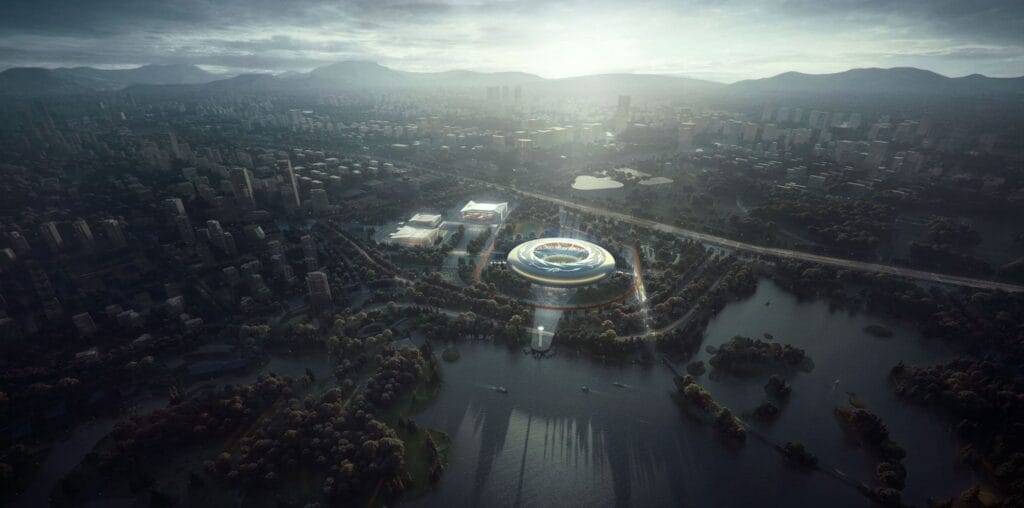
Key Elements of High-Quality 3D Architectural Renderings
لذا, what separates a “meh” rendering from a “رائع” تقديم? It’s all in the details. Let’s break down the key ingredients of top-notch 3D architectural renderings.
What Makes a Good Architectural Render?
A good rendering isn’t just a pretty picture. It is a carefully crafted piece that balances technical skill with artistic vision. Here is what to look for:
Realistic Lighting and Shadows
- It is All About the Light: تماما كما هو الحال في التصوير الفوتوغرافي, الإضاءة هي كل شيء. Good renderings nail the interplay of natural and artificial light.
- Shadow Play: Shadows should be accurate, adding depth and realism. Techniques like global illumination and ambient occlusion help achieve this.
“Lighting is the key element that breathes life into a rendering.”
High-Quality Textures and Materials
- Feeling the Texture: You should almost be able to “يشعر” المواد. A brick wall should look rough, and a glass window should gleam.
- Reflect on This: Materials should interact with light realistically. Shiny surfaces should reflect, while matte surfaces should diffuse light.
Accurate 3D Models
- Precision is Key: The digital model needs to be spot-on. Every architectural element, from walls to windows, should be accurately modeled.
- Scale Matters: Everything should be in the correct proportion. A door should be the right size compared to a person, على سبيل المثال.
Effective Camera Angles and Composition
- Finding the Best View: The angle can make or break a rendering. It is about choosing the perspective that best showcases the design.
- Composition Rules: Just like in art, rules like the “rule of thirds” help create visually pleasing images.
Context and Environment
- Setting the Scene: A building doesn’t exist in a vacuum. Good renderings show it in its intended environment, whether it is a bustling cityscape or a quiet suburban street.
- Little Details, Big Impact: Adding people, الغطاء النباتي, and other details makes the scene more relatable and realistic.
Storytelling and Mood
- Beyond the Visual: A great rendering tells a story. It gives you a sense of what it would be like to be in that space.
- Setting the Tone: The right combination of color, إضاءة, and composition can create a specific mood, whether it is calm and serene or vibrant and energetic.
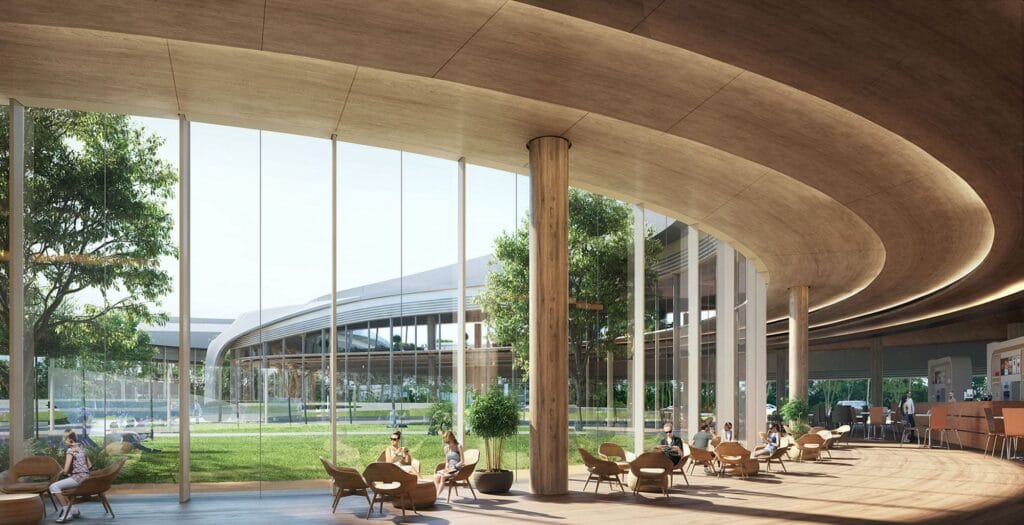
The 3D Architectural Rendering Process
Step-by-Step Workflow
Creating a 3D architectural rendering is a multi-stage process. Each step is crucial to achieving that final, jaw-dropping image. Think of it as a relay race where each team member (or step) has a vital role.1. Project Briefing and Information Gathering
- Getting on the Same Page: This is where the artist and client discuss the project’s goals, رؤية, and scope. It is like the initial brainstorming session.
- Gathering the Goods: The artist collects all necessary materials, such as architectural plans, رسومات CAD, اسكتشات, and any reference images.
2. 3د النمذجة
- Building the Foundation: باستخدام البرامج المتخصصة, the artist creates a digital 3D model of the building or space.
- الاهتمام بالتفاصيل: Accuracy is paramount. Every door, نافذة, and wall needs to be precisely modeled.
3. Material and Texture Application
- Adding the Skin: Realistic textures and materials are applied to the model’s surfaces. This is where a flat, gray wall starts to look like brick, خشب, or glass.
- Property Adjustments: The artist tweaks material properties like reflectivity and roughness to make them look just right.
4. إعداد الإضاءة
- Let There Be Light: The artist simulates natural and artificial light sources, setting the scene’s mood.
- Fine-Tuning: Light intensity, لون, and direction are adjusted to achieve the desired effect.
5. Camera Positioning and Composition
- Finding the Perfect Angle: The artist chooses the best camera angles to showcase the design, just like a photographer framing a shot.
- Composition 101: Principles of composition are applied to create visually appealing images.
6. Test Rendering and Feedback
- First Look: Initial low-resolution renders are generated for review. It is like a rough draft.
- Feedback Loop: The client provides feedback, and the artist makes necessary adjustments.
7. Final Rendering
- The Main Event: High-resolution images or animations are produced. This can take time, depending on the project’s complexity.
- Patience is a Virtue: This step often involves waiting for the computer to do its thing.
8. Post-Processing and Refinement
- Adding the Magic Touch: The rendered images are polished using image editing software like Photoshop.
- Detail Work: Colors are adjusted, effects are added, and any minor issues are corrected.
9. Delivery and Presentation
- Showtime: The final renderings are presented to the client.
- Format Matters: Files are prepared for their intended use, whether it is for print, web, or a virtual tour.
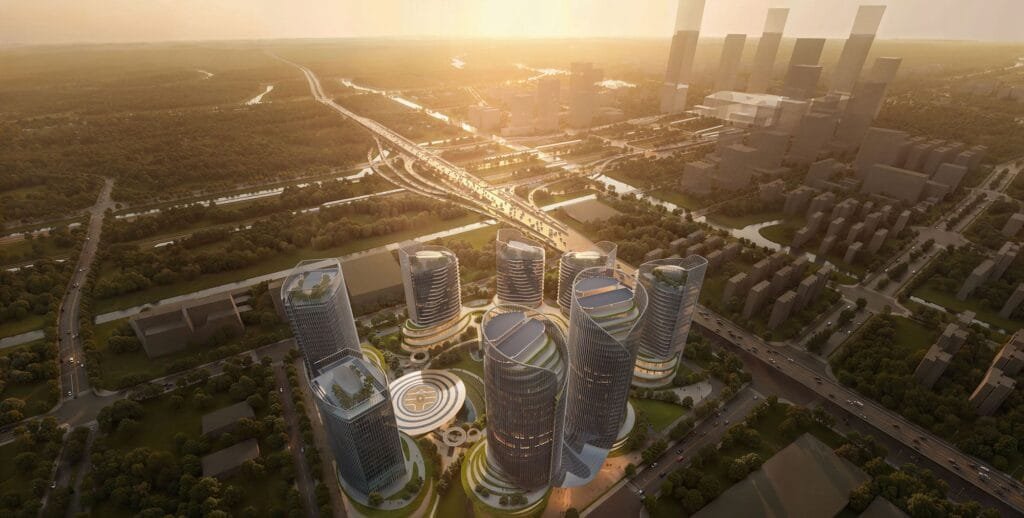
Benefits of 3D Architectural Rendering
Why go through all this trouble? حسنًا, it turns out that 3D architectural rendering offers a boatload of benefits across the board. It is not just about pretty pictures; it is about making the whole design and building process smoother and more efficient. Let’s see how it helps different folks involved.
For Architects and Designers
For the creative minds dreaming up these spaces, 3D rendering is like a superpower.
- Improved Design Visualization:
- تجربة بحرية: Architects can play with different designs, مواد, and layouts without the cost of physical changes.
- Spot Flaws Early: It is easier to catch design issues before they become construction headaches.
- التواصل المعزز:
- Speak the Same Language: Renderings help everyone—clients, المهندسين, contractors—understand the design clearly.
- Teamwork Makes the Dream Work: Collaboration becomes smoother when everyone can visualize the project.
- Streamlined Design Process:
- Skip the Physical Models: No need to build costly and time-consuming physical models.
- تكرارات أسرع: Changes can be made quickly and easily in the digital model.
- Better Problem Solving:
- Visualize Challenges: Complex design problems become easier to see and solve.
- Find Creative Solutions: 3D visualization can spark innovative solutions.
- Accurate Building Site Layout:
- انظر الصورة الكبيرة: 3D renderings can show how a building fits into its environment, including landscaping and surrounding structures.
- Plan Down to the Details: Even utility lines and garden furniture placement can be visualized.
Key Takeaway: For architects and designers, 3D rendering is like a crystal ball that lets them see the future of their project, making their work more efficient and impactful.
For Real Estate Developers and Marketers
When it comes to selling properties, a picture is worth a thousand words—and a 3D rendering might be worth even more.
- Effective Marketing and Sales Tool:
- Eye-Catching Visuals: Stunning renderings grab attention in brochures, مواقع الويب, and social media.
- Attract Buyers and Investors: High-quality visuals can be the difference between a “maybe” و “yes.”
- Pre-Sales of Properties:
- Sell Before You Build: Buyers can commit to a property before construction even starts.
- Give a Realistic Preview: Clients can see exactly what they’re getting, reducing uncertainty.
- زيادة مشاركة العملاء:
- تجارب غامرة: Virtual tours and animations let clients explore the property in a whole new way.
- Build Excitement: Seeing the finished product in advance builds anticipation and emotional connection.
Bottom Line: For real estate professionals, 3D rendering is like a supercharged marketing tool that helps sell properties faster and more effectively.
للعملاء
If you are commissioning a building project, 3D rendering is like having a direct line to your architect’s vision.
- Clearer Understanding of the Design:
- Visualize Your Dream: See exactly what your new home or office will look like.
- Make Informed Choices: Make better decisions about layouts, مواد, وينتهي.
- تقليل مخاطر سوء الفهم:
- Avoid Surprises: Ensure the final product matches your expectations.
- Minimize Costly Changes: Fewer misunderstandings mean fewer expensive alterations during construction.
- Enhanced Satisfaction:
- Feel Involved: Be an active part of the design process.
- Build Confidence: Feel more secure and excited about your investment.
In a Nutshell: للعملاء, 3D rendering offers peace of mind, ensuring that what they see is what they’ll get.
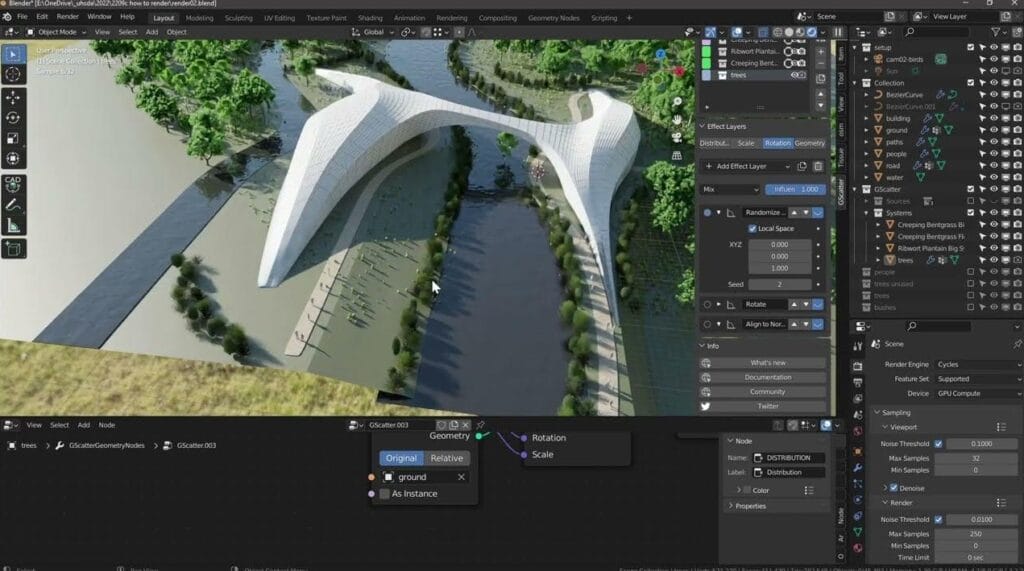
Popular Software for 3D Architectural Rendering
Overview of Industry-Standard Tools
Choosing the right software is crucial. It is like picking the right instrument for a symphony. Here are some of the heavy hitters:| برمجة | الميزات الرئيسية | الأفضل ل |
|---|---|---|
| 3س ماكس | Versatile modeling, الرسوم المتحركة, powerful rendering engines (في راي, تاج). | Complex projects, detailed visualizations, الرسوم المتحركة. |
| ريفيت | برنامج بيم, integrates well with other Autodesk products. | التصميم المعماري, الوثائق, تعاون. |
| سكيتش اب | سهل الاستخدام, easy to learn, good with rendering plugins like V-Ray. | Quick modeling, التصميم المفاهيمي, العروض التقديمية. |
| لوميون | تقديم الوقت الحقيقي, سريع, سهل الاستخدام. | Creating animations and visualizations quickly. |
| في راي | Powerful rendering engine, works with various software, نتائج واقعية. | جودة عالية, realistic renderings. |
| twinmotion | تقديم الوقت الحقيقي, intelligent environmental features, VR support. | Fast visualizations, VR experiences. |
| Enscape | Real-time rendering plugin, integrated into design software. | Real-time feedback during design, العروض التقديمية. |
| الخلاط | Open-source, حر, capable of modeling, الرسوم المتحركة, تقديم. | Budget-friendly projects, learning 3D, various tasks. |
| فوتوشوب | Image editing, post-processing, adding details and effects. | Enhancing renders, compositing, final touches. |
- 3س ماكس:
- The Powerhouse: This is like the Swiss Army knife of 3D software. It does modeling, الرسوم المتحركة, وتقديم.
- Engine Options: It works with top-notch rendering engines like في راي و تاج, known for their photorealistic results.
- الأفضل ل: Complex projects, detailed visualizations, and those who need all the bells and whistles.
- ريفيت:
- The Architect’s Choice: This is BIM (نمذجة معلومات البناء) برمجة, popular among architects.
- Team Player: It plays well with other أوتوديسك منتجات, making collaboration easier.
- الأفضل ل: التصميم المعماري, الوثائق, and projects where data management is crucial.
- سكيتش اب:
- The User-Friendly One: Known for its ease of use, SketchUp is great for beginners and quick modeling.
- Plugin Power: It works well with rendering plugins like V-Ray to boost its capabilities.
- الأفضل ل: Conceptual design, العروض التقديمية, and those who want a gentle learning curve.
- لوميون:
- The Speedster: This software is all about real-time rendering, meaning you see changes instantly.
- Animation Ace: It is fantastic for creating animations quickly.
- الأفضل ل: Fast-paced projects, quick visualizations, and those who value speed.
- في راي:
- The Realism King: V-Ray isn’t standalone software but a rendering engine that works with others like 3ds Max and SketchUp.
- الواقعية: It is renowned for creating incredibly realistic images.
- الأفضل ل: جودة عالية, photorealistic renderings where detail and accuracy are paramount.
- twinmotion:
- The Smart One: This real-time rendering tool includes intelligent features like dynamic environments.
- VR Ready: It is known for its strong support for virtual reality.
- الأفضل ل: Projects where speed and VR experiences are important.
- Enscape:
- The Integrator: Enscape is a real-time rendering plugin that works directly within your design software.
- ردود الفعل الفورية: It allows you to see changes as you make them in your design.
- الأفضل ل: Real-time design visualization and client presentations.
- الخلاط:
- The Freebie: Blender is open-source, meaning it is free to use. Don’t let that fool you; it is powerful.
- All-Rounder: It can handle modeling, الرسوم المتحركة, وتقديم.
- الأفضل ل: Budget-friendly projects, those learning 3D, and a wide range of 3D tasks.
- فوتوشوب:
- The Finisher: While not 3D software, فوتوشوب is crucial for post-processing.
- Detail Enhancer: It is used to add details, adjust colors, and composite images.
- الأفضل ل: Enhancing renders, adding the final touches, and creating a polished look.
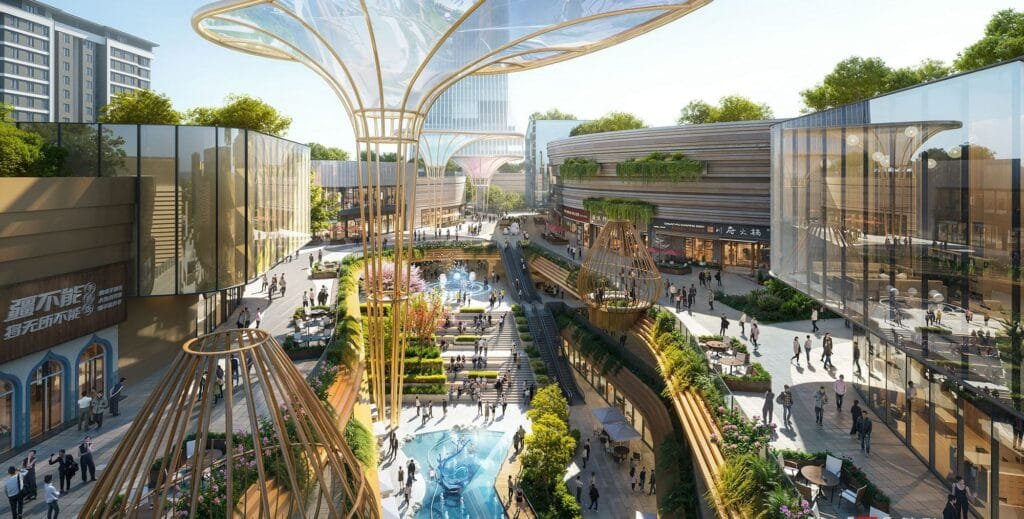
Choosing the Right 3D Architectural Rendering Studio
Factors to Consider
Choosing a studio is a big decision. Here is a checklist to help you make the right call:- Portfolio and Experience:
- Check Out Their Work: Look at their past projects. هل يعجبك أسلوبهم? Do they have experience with projects like yours?
- Variety is Key: A diverse portfolio shows they can handle different types of projects.
- الخبرة الفنية:
- Software Savvy: Make sure they’re proficient in the latest software.
- Style Mastery: They should be skilled in the rendering style you are after, whether it is photorealistic, artistic, or something else.
- التواصل والتعاون:
- Good Listeners: They should be attentive to your needs and responsive to your questions.
- Feedback Friendly: Look for a studio that’s open to feedback and easy to work with.
- Reviews and Testimonials:
- What Others Say: Check out reviews or ask for references to see what past clients have to say.
- Reputation Matters: A studio with a good track record is more likely to deliver quality work.
- Pricing and Turnaround Time:
- احصل على عروض الأسعار: Compare prices from different studios, but remember that cheapest isn’t always best.
- الوقت هو المال: Make sure their timeline fits your project schedule.
- First Communication:
- Pay Attention to Details: How quickly do they respond to your initial inquiry? Are they thorough in their responses?
- Listen to Your Needs: Do they take the time to understand your specific requirements and offer tailored solutions?
- Evaluate Their Service:
- Request a Quote: How long does it take for them to provide a quote? Is the proposal professional and detailed?
- اطرح الأسئلة: Do they provide clear answers to your questions about the process and their capabilities?
- Prepare Your References:
- Gather Materials: Have your architectural plans, اسكتشات, and any reference images ready.
- Communicate Your Vision: كلما زادت المعلومات التي تقدمها, the better the studio can understand and execute your vision.
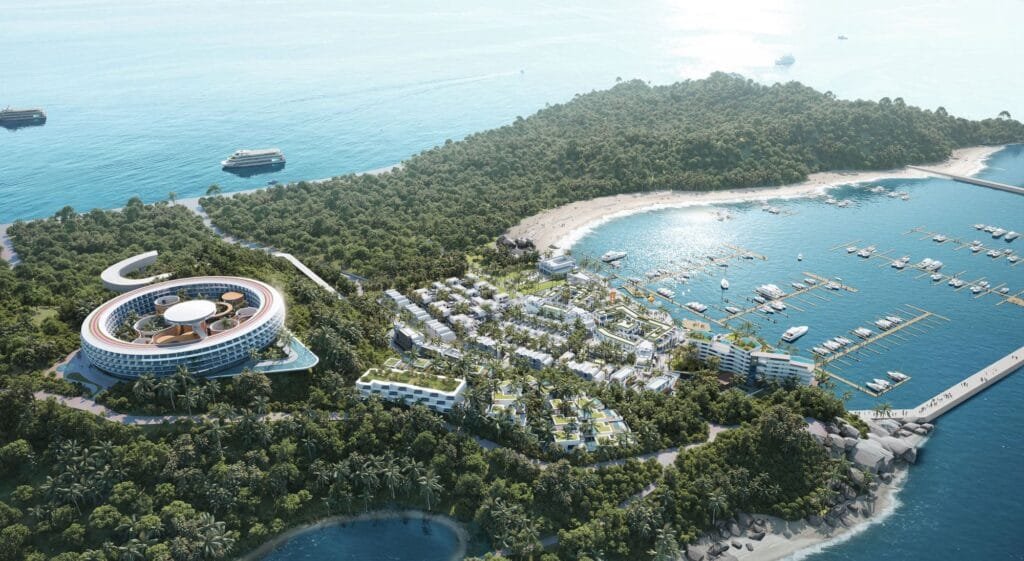
The Future of 3D Architectural Rendering
Hold onto your hats, because the world of 3D rendering is evolving at lightning speed! What was cutting-edge yesterday might be old news tomorrow. Let’s peek into the crystal ball and see what the future holds for this exciting field.
الاتجاهات والتقنيات الناشئة
The future is bright, and it is filled with some seriously cool tech. Here is what’s on the horizon:
- تقديم الوقت الحقيقي:
- Instant Gratification: This technology is becoming increasingly popular. Imagine making a change and seeing it instantly in the rendering.
- Faster Everything: It speeds up the design process, allowing for quicker decisions and changes.
- Popular software: Twinmotion and Lumion are the representatives.
- الواقع الافتراضي (الواقع الافتراضي) والواقع المعزز (AR):
- Step Inside Your Design: VR lets you “المشي” a building before it is built. It is like teleporting into the future!
- Overlay Reality: AR can overlay 3D models onto the real world. Imagine seeing your future building on its actual site through your phone.
- الذكاء الاصطناعي (منظمة العفو الدولية):
- Smart Tools: AI is starting to help with things like generating design options and automating repetitive tasks.
- الواقعية المحسنة: AI can help make renderings even more lifelike, learning from real-world data.
- Cloud-Based Rendering:
- Power to the People: Cloud services are making powerful rendering accessible to more people, even without high-end computers.
- Render Anywhere: You are no longer tied to your workstation. Render from anywhere with an internet connection.
- Parametric and Generative Design:
- Design with Algorithms: These approaches use algorithms to create designs based on specific parameters.
- Integrated Workflow: They’re becoming more integrated with rendering, allowing for dynamic design exploration.
الصورة الكبيرة: These trends point to a future where 3D rendering is faster, أكثر غامرة, and more integrated into the design process. It is not just about visualizing a design anymore; it is about experiencing it.
خاتمة
We’ve journeyed from the basics of 3D architectural rendering to the exciting possibilities of its future. It is clear that this technology isn’t just a fancy tool for making pretty pictures. It is a game-changer for how we design, يبني, and experience our spaces. Whether you are an architect, مطور, مصمم, or someone planning your dream home, understanding 3D rendering can open up a whole new world of possibilities.
This technology empowers architects to refine their designs, helps real estate professionals sell properties more effectively, and allows clients to truly understand what they’re getting before the first brick is even laid. فهو يسد الفجوة بين الخيال والواقع, making the design and construction process more efficient, تعاونية, وفي النهاية, more satisfying for everyone involved.
As we look ahead, the advancements in real-time rendering, الواقع الافتراضي, AR, and AI promise to make 3D architectural rendering even more powerful and accessible. The future of design is here, and it is incredibly exciting. لذا, embrace the possibilities, explore the potential, and get ready to see your architectural dreams come to life in ways you never thought possible.
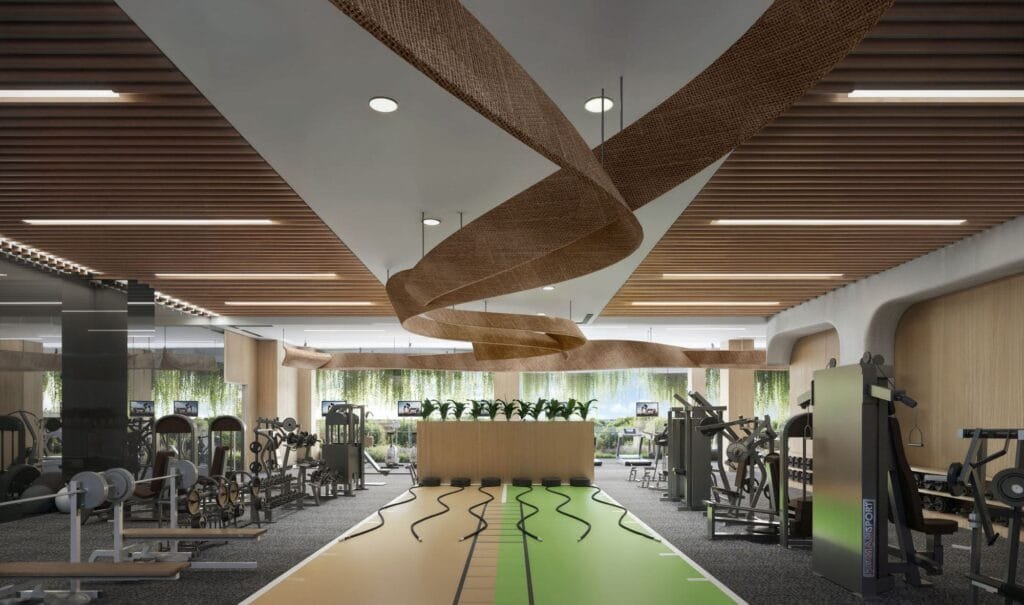
الأسئلة المتداولة (الأسئلة الشائعة) about 3D Architectural Rendering
What’s the difference between architectural rendering and visualization?
Honestly, not much! These terms are often used interchangeably. Both refer to the process of creating images or animations of architectural designs. فكر “التصور” as the broader term, بينما “تقديم” often refers to the specific technical process of generating the image.How much does 3D architectural rendering cost?
It varies, just like the cost of building a house varies depending on its size and complexity. Simple renderings might start around $300, while complex projects with multiple views and animations can run into the thousands. It really depends on your needs and the level of detail you are after. Many professional studios offer elevated prices, but they come with experience in the field, making the process smoother.How long does it take to create a 3D architectural rendering?
مرة أخرى, it depends. A basic rendering might take a couple of days, while a detailed animation of a large development could take several weeks. Factors like the project’s complexity, the level of detail, and the number of revisions all play a role. Here is a general idea:- Single Family House: 7-10 أيام
- Multi-Family Townhouse: 2-3 أسابيع
- Hi-Rise Building: 3-4 أسابيع
- Large-Scale Urban Area: 6 أسابيع +
What software is best for architectural rendering?
لا يوجد واحد “أفضل” برمجة, as each has its strengths. قسم 7 above provides a good overview. 3ds Max and Revit are popular for detailed modeling, while Lumion and Twinmotion are great for fast, تقديم في الوقت الحقيقي. V-Ray is a powerful rendering engine that works with many different programs. أخيرًا, the best software depends on your specific needs and preferences. It is recommended to look at the studio’s portfolio to give you a good idea of their past work and what kind of projects they are capable of handling.Can I learn 3D architectural rendering myself?
قطعاً! There are tons of resources available online, from free tutorials to paid courses. Blender is a great free software to start with. It takes time and dedication, but it is definitely achievable. Many architects and architecture graduates have ventured into this field and some have made it into a whole new career, becoming known as 3D artists or 3D visualizers.Why do we need architectural rendering?
Architectural rendering speeds up design development, design review, وصنع القرار. It enables architects to visualize, review, صقل, and easily communicate their design concepts. It helps architects, المصممين, and clients visualize a project before it is built, reducing misunderstandings and costly changes down the line. It is also a powerful tool for marketing and selling properties.What are architectural rendering techniques?
There are many techniques involved, such as 3D modeling, النسيج, إضاءة, and camera positioning, each tailored to the specific needs of the project. Different styles, like photorealistic or artistic, are used depending on the project’s goals.What makes a good architectural render?
A good render is realistic, مفصل, and accurately represents the design. Key elements include accurate lighting and shadows, high-quality textures and materials, precise 3D models, effective camera angles, and a sense of context and environment. The render should also effectively communicate the key design ideas and features, helping all stakeholders understand the project.What is an architectural render?
An architectural render is a visual depiction of a building design, presenting details such as structure, مواد, and lighting to provide a realistic preview of the final construction.What are the 4 types of architectural rendering?
While there are many ways to categorize renderings, four common types are exterior, الداخلية, aerial, and interactive (like virtual tours), each serving to showcase different aspects and perspectives of the design.Do architects do 3D rendering?
نعم, many architects do 3D rendering as part of their design process. Some handle it in-house, while others collaborate with specialized rendering studios or 3D artists to create detailed visualizations of their designs.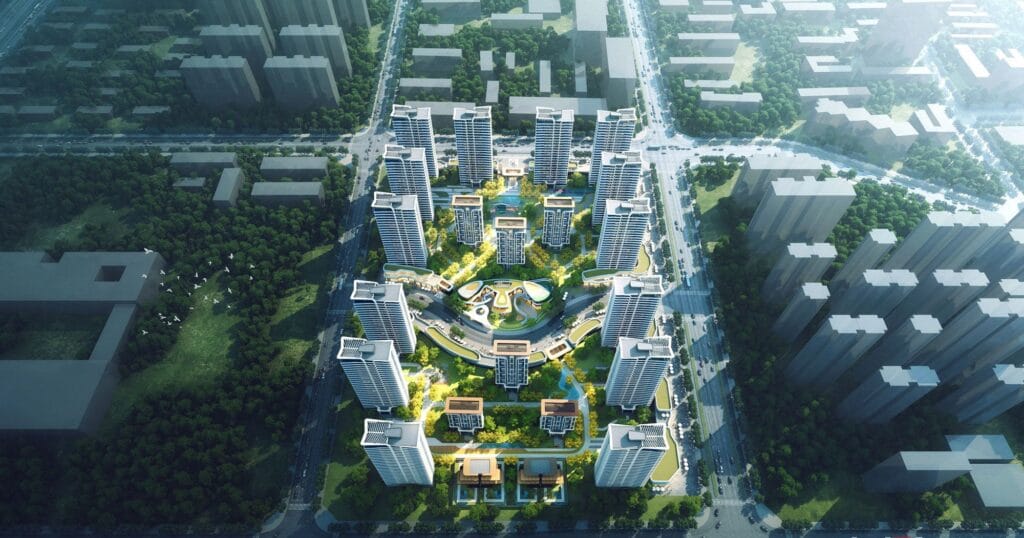
Tips for a Smooth 3D Rendering Project
1. Start with a Solid Foundation
Just like building a house, you need a strong foundation for your rendering project. This means having clear, detailed architectural plans and a well-defined vision for the final product. The more information you can provide upfront, أفضل.2. Communication is Key
Keep the lines of communication open with your rendering artist or studio. Regular check-ins and feedback sessions can help ensure everyone stays on the same page and prevent misunderstandings. يتذكر, it is a collaborative process.3. Be Open to Suggestions
Your rendering artist is an expert in their field. While you know your project best, be open to their suggestions and expertise. They might have ideas that can elevate the final product.4. Plan for Revisions
Revisions are a normal part of the process. Don’t expect perfection on the first try. بدلاً من, build in time for feedback and revisions to fine-tune the renderings until they are just right.5. Think About the End Use
Where will these renderings be used? On a website? In a brochure? For a virtual tour? Knowing the end use will help determine the best format, دقة, and style for your renderings.6. Don’t Be Afraid to Ask Questions
If something is unclear, don’t hesitate to ask. It is better to clarify things early on than to run into problems later in the process. A good rendering studio will be happy to answer your questions and explain things in a way you can understand.

